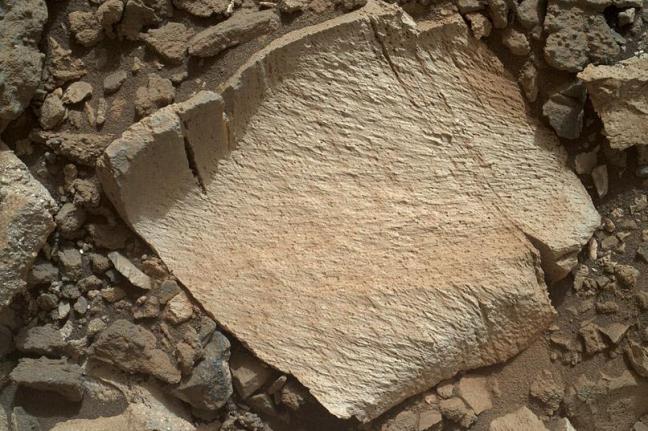Curiosity Rover Investigates Unusual Martian Bedrock

PASADENA, Calif., July 24 (UPI) — NASA’s resident geologist on Mars, Curiosity, has begun investigating a unique piece of bedrock, unlike anything it’s seen so far.
The bedrock — located downhill from a contact zone near Marias Pass, a geologic formation on lower Mount Sharp — is unusual for its high levels of silica.
Silica, which can exist in many forms, most of them geological, is the chemical combination of oxygen and silicon. On Earth, it’s most commonly found as quartz — the second most abundant mineral in the continental crust after feldspar.
It was the presence of silica at the Martian contact zone that first moved scientists to suggest the Red Planet, too, once hosted a continental crust. Now, researchers want to further explore the silica-rich formation dubbed “Elk,” believing it might hold evidence of ancient life. Silica is an excellent preserver of organic matter.
“One never knows what to expect on Mars, but the Elk target was interesting enough to go back and investigate,” Roger Wiens, a researcher at Los Alamos National Laboratory and lead scientist for Curiosity’s ChemCam instrument, said in a press release.
Prior to arriving at the Elk formation, the rover was busy investigating an intriguing contact zone. As scientists explain, the coming together of pale mudstone and darker sandstone suggests a history of continental shelving.
The geological evolution of early Mars and early Earth may not have been all that dissimilar, researchers say.
“We found an outcrop named Missoula where the two rock types came together, but it was quite small and close to the ground,” said Ashwin Vasavada, the mission’s project scientist at NASA’s Jet Propulsion Laboratory. “We used the robotic arm to capture a dog’s-eye view with the MAHLI camera, getting our nose right in there.”
Curiosity’s three-year anniversary is fast approaching, and while the rover has made some tremendous discoveries, there is much of the planet it has yet to explore. For now, the Mars rover will continue to study the rocky layers of Mount Sharp.






